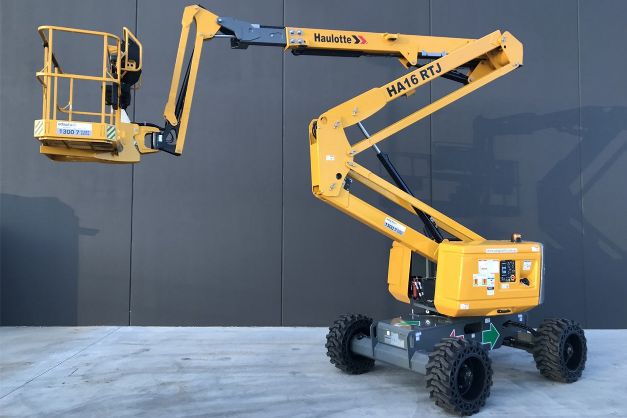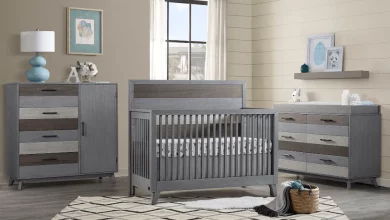Boom Lifts for Green Building: Sustainable Practices in Elevated Access Solutions

As the construction industry increasingly embraces sustainable building practices, the role of equipment and machinery in supporting green initiatives becomes crucial. Boom Lift , essential for reaching elevated areas safely and efficiently, are also evolving to meet the demands of green building practices. This blog explores how boom lifts are contributing to sustainable construction and highlights practices and innovations that align with green building standards.
The Importance of Green Building Practices
Green building practices aim to minimize the environmental impact of construction projects through efficient use of resources, energy, and materials. These practices focus on reducing waste, conserving energy, and creating healthier indoor environments. As part of these efforts, the choice of equipment and machinery, including boom lifts, plays a significant role in supporting sustainability goals.
How Boom Lifts Contribute to Green Building
1. Energy-Efficient Models
The advancement of energy-efficient technologies has led to the development of boom lifts that align with green building objectives:
- Electric Boom Lifts: Electric boom lifts are designed to operate without emissions, making them ideal for indoor use and reducing the carbon footprint of construction projects. They offer a cleaner alternative to traditional diesel-powered lifts, contributing to better air quality and lower environmental impact.
- Hybrid Boom Lifts: Hybrid models combine electric and diesel power, providing the flexibility to operate in both indoor and outdoor environments while reducing fuel consumption and emissions. These lifts optimize energy use, supporting sustainable building practices.
By incorporating energy-efficient boom lifts into construction projects, companies can reduce their environmental impact and contribute to greener building practices.
2. Reduced Noise Pollution
Noise pollution is a significant concern in urban areas and during night-time construction. Modern boom lifts are designed to minimize noise and enhance worksite comfort:
- Quiet Operation: Electric and hybrid boom lifts operate more quietly than their diesel counterparts, reducing noise pollution on construction sites. This is particularly beneficial in residential or urban settings where noise regulations and community considerations are important.
- Soundproofing Technologies: Advances in soundproofing technologies have led to quieter hydraulic systems and engine components, further minimizing noise and enhancing the work environment.
Reducing noise pollution not only supports green building goals but also fosters a more pleasant and compliant construction experience.
3. Longer Equipment Lifespan
The longevity and durability of equipment contribute to sustainable building practices by reducing the frequency of replacements and repairs:
- High-Quality Materials: Modern boom lifts are constructed using high-quality, durable materials that extend the equipment’s lifespan. This reduces the need for frequent replacements and minimizes waste associated with discarded machinery.
- Preventive Maintenance Features: Innovations in preventive maintenance, such as real-time diagnostics and remote monitoring, help identify potential issues before they require major repairs. This proactive approach extends the life of the equipment and reduces environmental impact.
By investing in durable and well-maintained boom lifts, construction companies can support sustainability through reduced resource consumption and waste.
4. Efficient Resource Use
Boom lifts are designed to maximize efficiency in resource use, aligning with green building principles:
- Optimized Operation: Modern boom lifts are equipped with advanced control systems that optimize power consumption and operational efficiency. Features such as energy-saving modes and automatic adjustments ensure that the lift operates at peak performance without unnecessary energy use.
- Load and Reach Efficiency: Boom lifts are designed to handle various loads and reach requirements efficiently, reducing the need for additional equipment and resources on-site. This streamlined approach supports resource conservation and minimizes project waste.
Efficient resource use in boom lifts contributes to overall sustainability by minimizing energy consumption and reducing the need for additional machinery.
5. Supporting Sustainable Construction Practices
Boom lifts support several sustainable construction practices and contribute to green building certifications:
- Waste Reduction: By providing efficient access to elevated areas, boom lifts reduce the need for scaffolding and ladders, which can contribute to construction waste. Their precision and versatility help minimize material waste and improve project outcomes.
- Compliance with Green Certifications: Many green building certifications, such as LEED (Leadership in Energy and Environmental Design), recognize the use of energy-efficient and low-emission equipment. Incorporating boom lifts that meet these criteria can contribute to achieving certification and demonstrating commitment to sustainability.
By aligning with green building practices and certifications, boom lifts play a key role in promoting sustainable construction and reducing environmental impact.
Future Innovations in Sustainable Boom Lifts
As the demand for sustainable construction practices continues to grow, future innovations in boom lifts are likely to focus on further enhancing their environmental performance:
- Advanced Battery Technologies: The development of high-capacity and fast-charging batteries will improve the performance and efficiency of electric boom lifts, making them more suitable for a wider range of applications.
- Enhanced Telemetry and Data Analytics: Advanced telemetry and data analytics will provide deeper insights into equipment usage and performance, allowing for more precise management and optimization of energy consumption.
- Recycling and Material Efficiency: Future boom lift designs may incorporate more recyclable materials and sustainable manufacturing processes, further reducing their environmental impact.
By embracing these innovations, boom lifts will continue to support green building practices and contribute to a more sustainable construction industry.
Conclusion: Embracing Sustainability with Boom Lifts
Boom lifts are more than just essential tools for reaching elevated areas; they are also integral to supporting sustainable construction practices. Through advancements in energy efficiency, noise reduction, equipment lifespan, and resource use, modern boom lifts are contributing to greener building practices and reducing environmental impact.
As the construction industry moves toward greater sustainability, the role of boom lifts in supporting these goals will continue to evolve. By investing in innovative and eco-friendly boom lifts, companies can enhance their commitment to green building and contribute to a more sustainable future.
This blog explores how boom lifts are contributing to green building practices and highlights the innovative features that support sustainability. If you have more questions or need further details, feel free to ask!








